 Awaab’S Law And Coastal Properties A Guide To Preventing Damp In Brighton Homes
Awaab’S Law And Coastal Properties A Guide To Preventing Damp In Brighton Homes
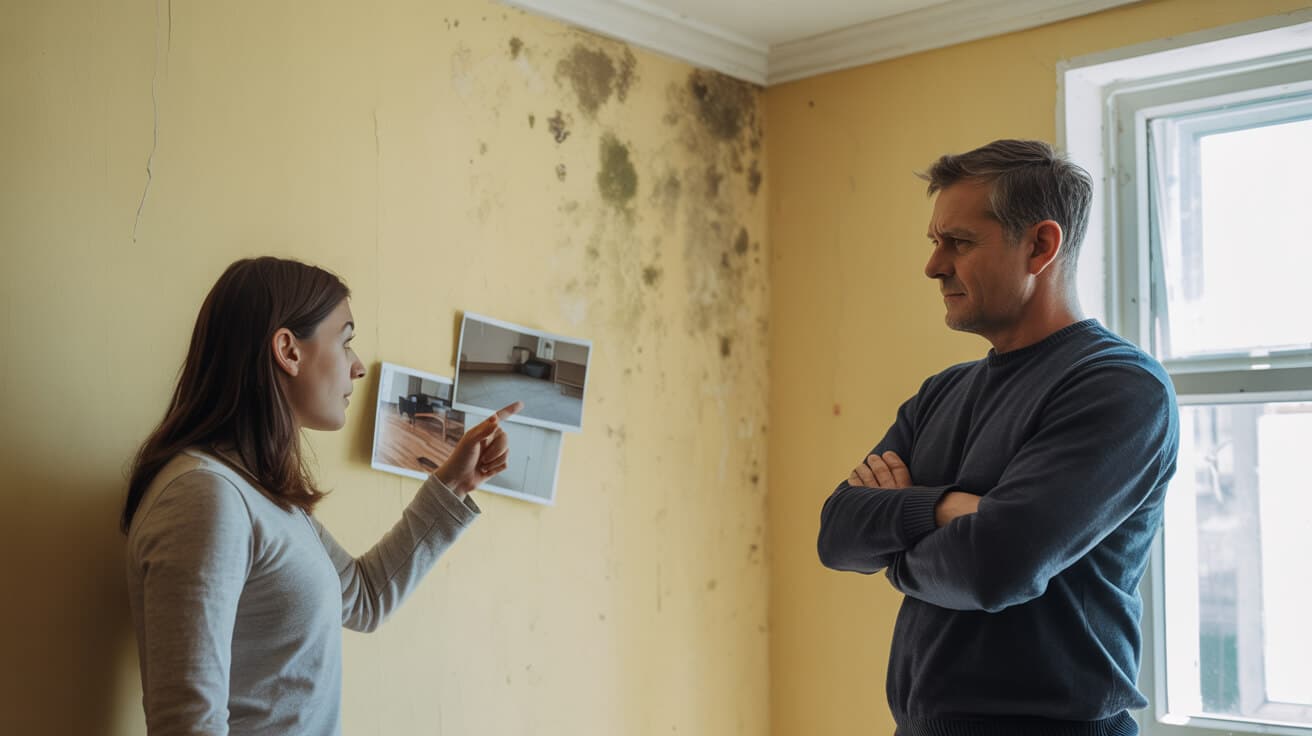
Is Brighton’s Unique Coastal Climate Secretly Damaging Your Home—and Putting Your Comfort at Risk?
The sea views are spectacular, but in Brighton, the real test starts long after the sunsets fade. What you seldom see—persistent coastal damp, salted air, and dramatic weather shifts—poses a quiet but relentless threat to properties of every age across the city. Homeowners, landlords, and facilities managers face a unique maintenance battle: Brighton’s climate is not just an environmental quirk, it’s an endurance test for your building, your health, and your long-term investment.
You can’t judge a Brighton property by its appearance—beneath even spotless paint, silent moisture and salt are already hard at work.
If you rely on typical maintenance routines or assume modern refurbishments are a shield, the coast’s invisible enemies have a way of proving you wrong. Brighton’s triple whammy—high humidity, wind-driven rain, and marine salt—challenges old and new properties alike. Sea air doesn’t just “freshen up” your home; it works with damp spells to slip past roof tiles, window seals, or the thinnest cracks in paintwork.
The issue isn’t amateur hour stuff: moisture and salted air combine at a micro level, seeping invisibly for months before they show up in more costly and disruptive ways—think weakened mortar, skirting board rot, persistent condensation, or actual black mould outbreaks that refuse to shift. Letting a small leak, pitted render, or neglected roof wait “for the summer” can quietly transform a manageable repair into a compliance, insurance, or legal headache.
Local insight:
Brighton’s mix of historic terraces, modern flats, and coastal-facing houses all experience this salt and water “perfect storm.” If you don’t actively manage damp here, you are gambling with tenant health, energy loss, and property value in ways rarely seen inland.
(wisepropertycare.com)
There’s no such thing as a “maintenance-free” property on the coast—just a window of opportunity, closing fast if you ignore the warning signs.
How Does Damp Actually Sneak Into Brighton Homes—and Why Is Local Risk So High?

Brighton’s damp storey breaks the rules most property owners know. Where “rising damp” gets the headlines nationwide, Brighton’s signature threat is actually penetrating damp—infiltration from relentless weather, salted rain, and hairline vulnerabilities that can escape even diligent inspections.
Moisture doesn’t kick the door down. It seeps—with salt riding the wind, finding the smallest entry routes, chemically attacking bricks, render, and even “weatherproof” coatings. One missed waterproofing bead, a slipped roof tile, or a tiny crack in a window mastic is often all it takes.
Brighton’s wind, rain, and seawater expose even minor gaps. Salt acts as an accelerant, turning surface flaws into deep-set problems—fast.
The city’s “salt burden” is its defining risk. Fast-changing weather means walls never really dry out, and the chemistry of marine air rapidly degrades paint, metalwork, and sealants. Features you may consider “cosmetic”—such as flaking paint, a patch of crumbling mortar, or a chalky bloom on exposed brick—are frequently the first distress signals of much bigger issues lurking behind the walls.
Key Brighton vulnerability points:
- External brickwork and stone with worn or absent pointing, especially facing the sea
- Failing roof flashings, parapet walls, and valley gutters—prime sites for water tracking
- Timber window sills and surrounds, where salt accelerates rot or gap formation
- North or sea-facing walls, where rain never fully dries
- Flat roofs, or areas with poor ventilation, which collect and trap water vapour
Proof point:
“Brighton homes face a unique combination of wind-driven rain and saline humidity, exploiting even the smallest construction flaws.”
(bhesco.co.uk)
If no one can recall the last full external survey or roof/gutter check, the odds of a hidden ingress point creeping up are higher than you’d think—especially in properties that skip regular, coastal-specific maintenance.
What Early Signs of Damp and Mould Catch Out Most Brighton Homeowners?
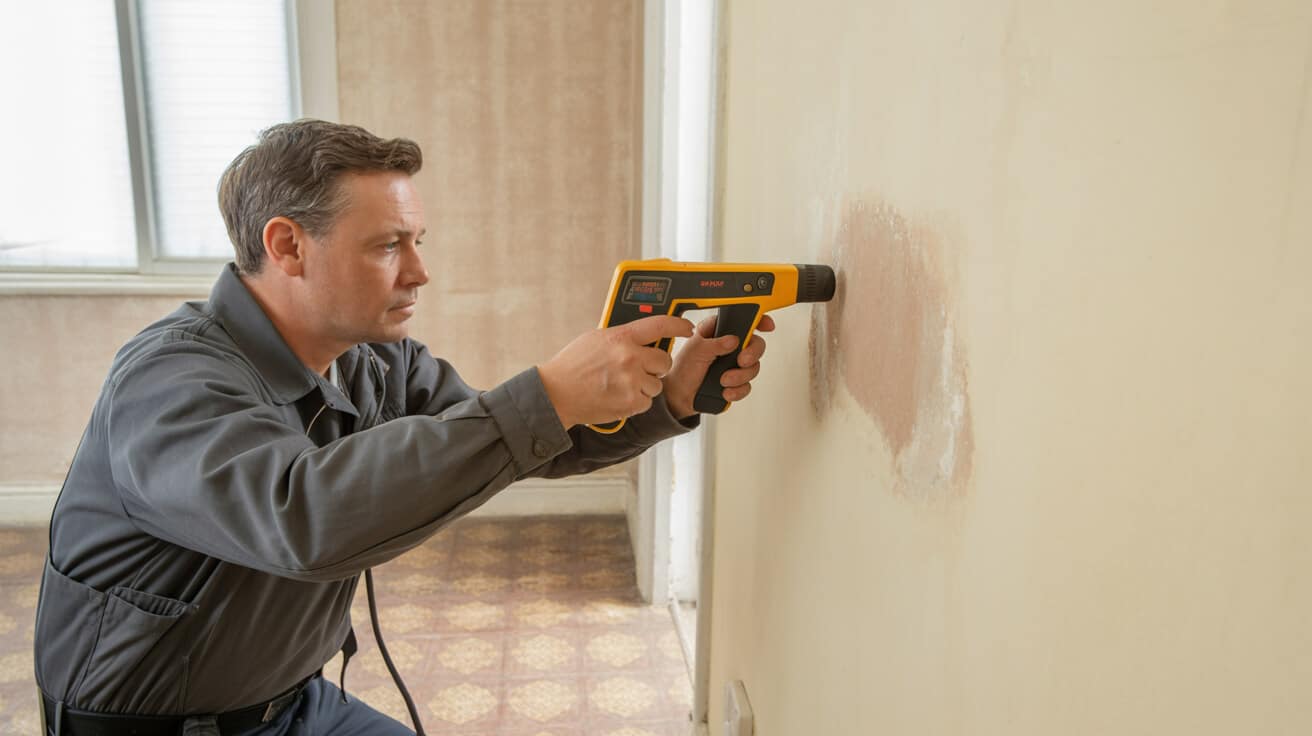
Most damp stories don’t start dramatically—they begin quietly. In Brighton, subtle symptoms often play out for months before anyone realises: minor stains, musty aromas, or persistent condensation that gets wiped away without much thought. But these minor cues are the tip of the iceberg, amplified by the city’s climate.
By the time water streaks or patches are visible, the underlying battle with salt and moisture is already well underway.
Here’s what to watch for—even in properties you consider “sorted”:
- Condensation on windows, glass, or corners: (especially after a cold snap or in spring/autumn “shoulder seasons”)
- Discoloured or peeling paint—sometimes just a finger-width patch
- Unexpected earthy or musty smells that don’t shift after airing out
- Flecks of black, green, or white “fluff” behind furniture, at skirting, or on external walls
These “soft signals” don’t respect property age, décor or even recent refurbishment. In Brighton, even a hint of salt trace can compound damp effects, raising the risk for asthma, allergies, and chronic coughs—especially in kids or seniors, a link confirmed by NHS data and coastal city research (bbc.co.uk/news).
Don’t write off a tiny patch or lingering odour. Left on Brighton’s timeline, today’s annoyance can become tomorrow’s health or compliance emergency—often just before a new tenant moves in, or when your insurance renewal depends on a clean inspection.
How Does Awaab’s Law Directly Impact Landlords and Tenants in Brighton Properties?

Awaab’s Law has shifted the legal goalposts for damp and mould in the UK—and for Brighton landlords and agents, the effect is seismic. The law isn’t gentle about responsibilities: it enforces strict timelines and closes long-standing loopholes.
What you need to know:
- 24-hour response: Major leaks, structural jeopardy, or clear health risks (especially visible black mould or “active” leaks) demand immediate action.
- 10 working days: Even minor reports require a formal investigation, clear action plan, and active communication—non-urgent does *not* mean “someday.”
- Enforcement bite: Penalties stack up quickly—Brighton landlords dodging duties face fines, possible rent repayment orders, and in extreme cases, enforced takeover by authorities.
A well-documented damp or mould complaint now triggers legal deadlines. Tenants can insist on proof of action and escalate if delays persist.
The “open a window” era is over. Both private and social landlords across Brighton are held to the same standard. Excuses based on “tenant lifestyle” or patchy, temporary solutions will not stand up—a proven root-cause fix is expected.
Official summary:
“Landlords must address emergencies in 24 hours and all significant hazards within 10 days—evidence and communication are required at every step.”
(gov.uk)
Whether you own, manage, or rent, the law demands action, documentation, and transparency. The winners will be those who treat damp alerts like urgent health signals, not admin.
Which Brighton Property Types Face the Greatest Damp and Compliance Risks?
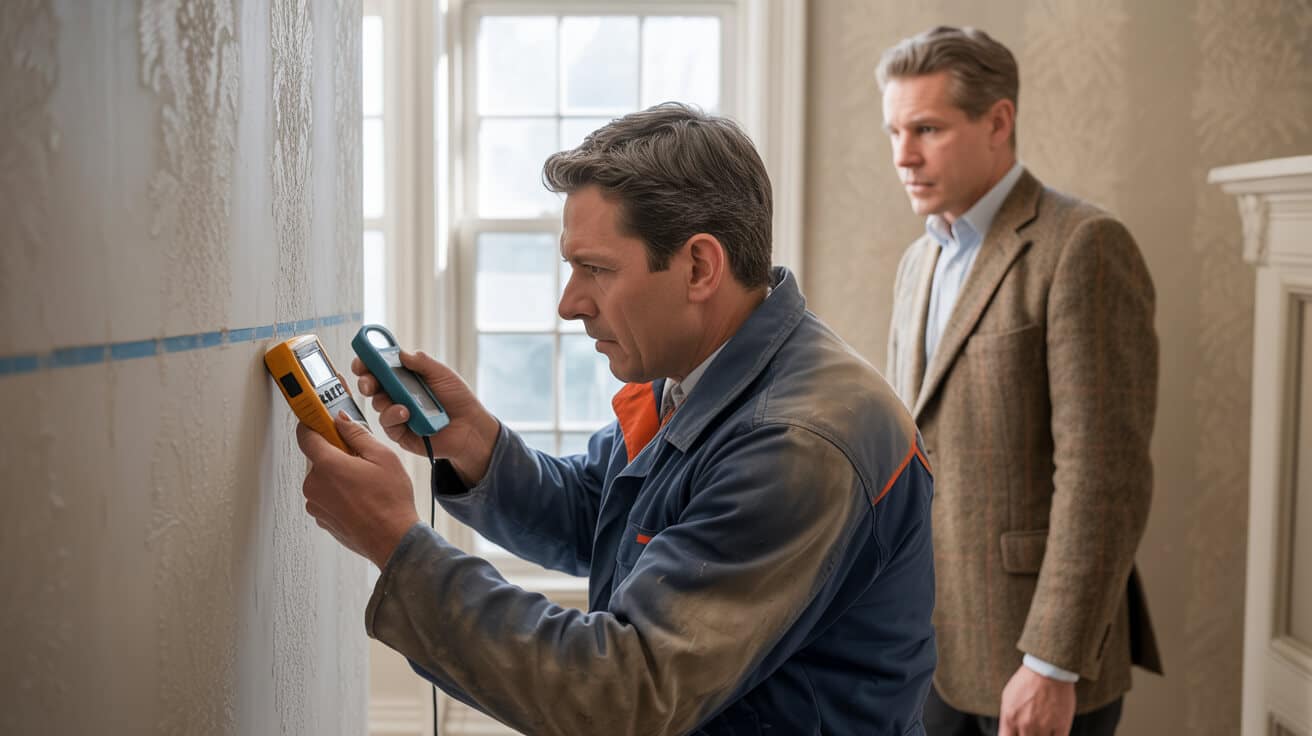
Living by the sea feels like winning the lottery—unless salt, wind, and rain are plotting against you. Not every Brighton home has the same risk profile. Some features, construction eras, and locations are simply more exposed (sometimes literally).
Highest-risk properties:
- Solid-wall Victorian, Edwardian, or pre-war homes with no cavity insulation
- Basement, lower-ground, or first-floor flats set against earth or with poor drainage
- Houses on the seafront, hills, or any “wind tunnel” street where air whips straight from the sea
- Buildings with original timber frames, non-upgraded windows, or patchy external render
- Any property that hasn’t completed significant insulation, membrane, or weatherproofing works in the last decade
Ground floors and basements in older, solid-wall properties are the city’s damp and mould hotspots—especially with Brighton’s high groundwater fluctuations.
Even recent builds aren’t untouchable—shoddy detailing on drainage, balcony design, or window fixing can put “new” at as much risk as the city’s classic terraces.
If the property fits any of these descriptions—and especially if it’s close to the sea—it’s time to step up inspections, reporting, and preventive work, not just hope for a dry season.
What Concrete Steps Best Shield Brighton Properties From Damp and Mould?
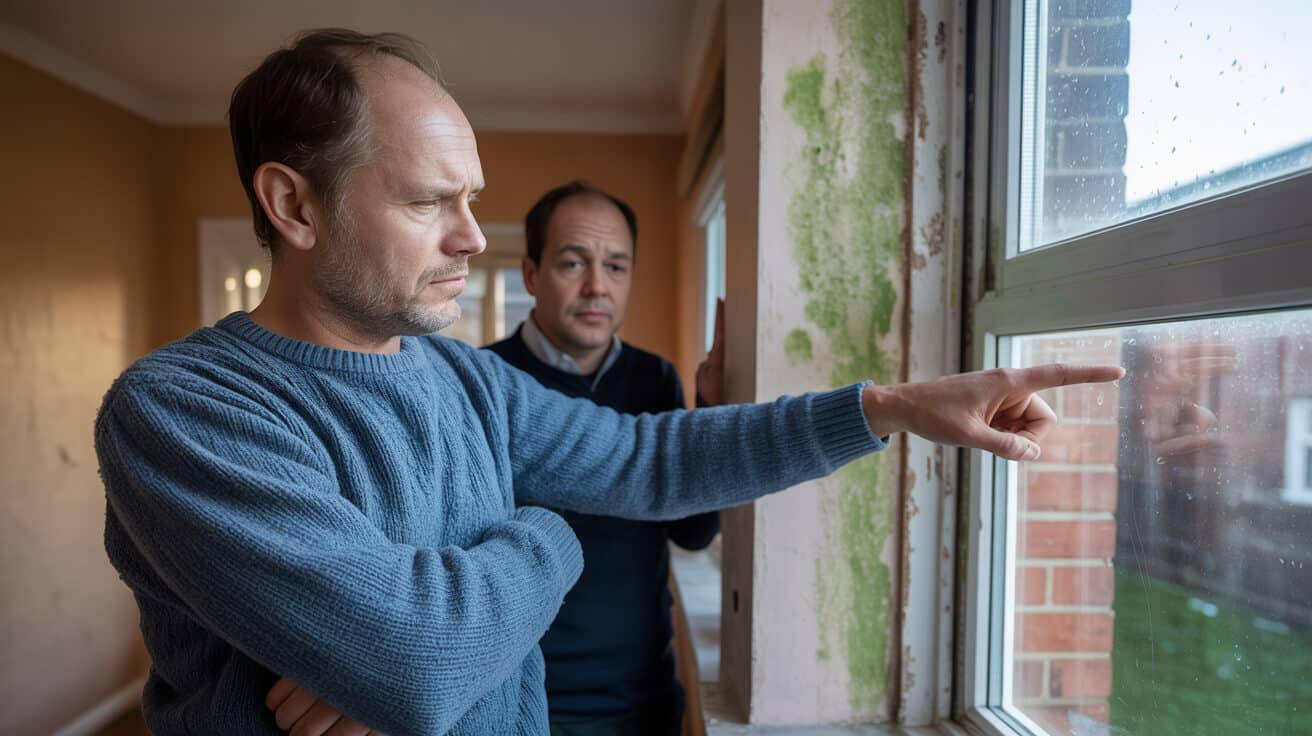
Here’s where winning over Brighton’s climate requires more than basic maintenance. Proactivity is non-negotiable—think of it as insurance by prevention, especially in a city that gives you so little leeway.
In Brighton, the best fix is the one you never need—catching a potential breach before it becomes a loss.
Top prevention steps for coastal homes:
- Extractor fans: (high spec, regularly tested) in every kitchen, bathroom, and laundry—not just “open a window.”
- Background heat: Maintain slightly warm internal temperatures, especially in colder months. Don’t let rooms “yo-yo” between cold and warm—condensation thrives on these cycles.
- Regular inspection routines: Every quarter, check your roof, gutters, and all external windows/doors after major weather changes—Brighton storms change the risk overnight.
- Breathable, anti-mould paints and renders: Use these on plagued walls and all external areas; avoid cheap, “plastic paints” that trap water instead of releasing it.
- Targeted insulation upgrades: Focus on wall, cavity, and membrane improvements tailored by a technician who understands both building regs and Brighton’s weather—retrofits aren’t one-size-fits-all.
- Damp and odour logs: Create a habit of documenting any stain, must smell, or “weird patch”—don’t wait for annual landlord checks. Snap a photo with date and location.
Expert advice from Energy Saving Trust:
“Ongoing ventilation, background heat, and systematic external checks—especially on roofs, gutters, and window seals—are essential defences against both damp and compliance drama on the coast.”
(energytrust.org.uk)
The city “rewards” the proactive: regular attention is both your legal and practical best friend.
How Should You Respond if Damp or Mould Comes Back After a Repair or Treatment?
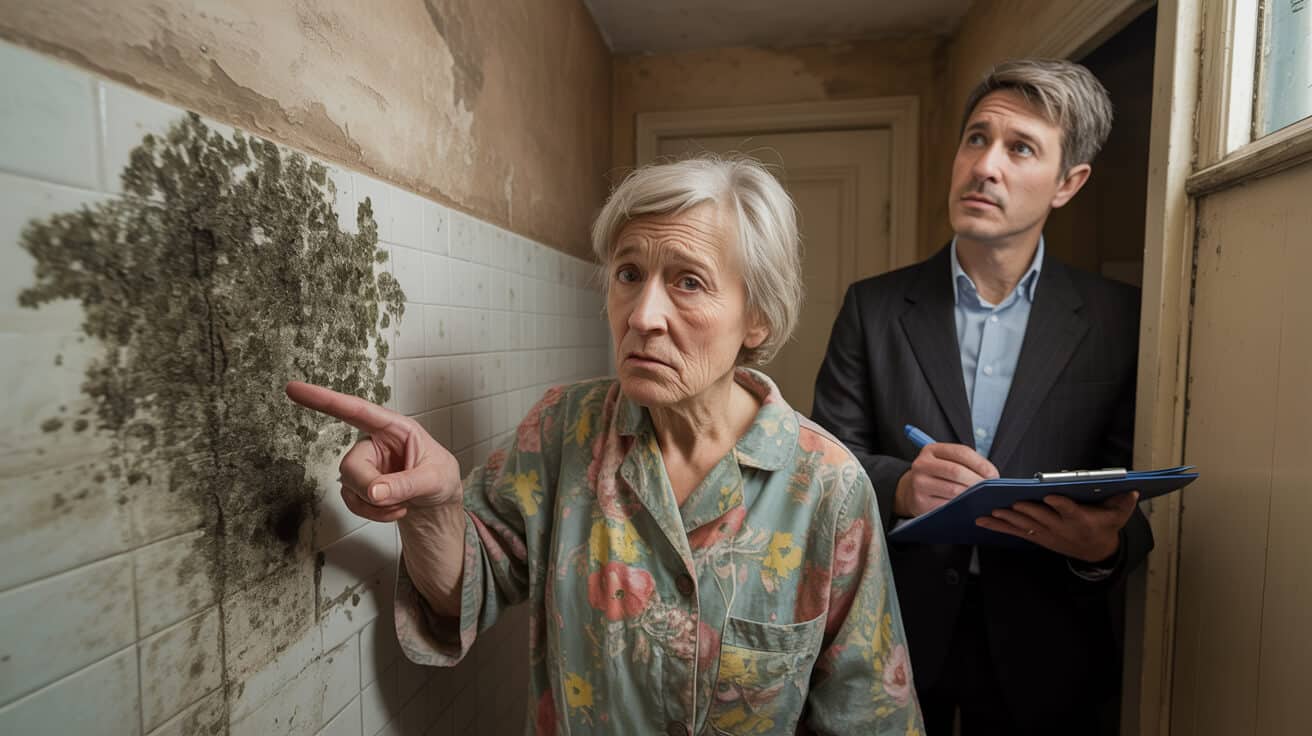
Damp recurring after attempted fixes isn’t a minor annoyance in Brighton—it’s a message you’ve missed a root cause, or that the repair didn’t take local challenges seriously enough.
In Brighton, repeat mould or damp means the core problem wasn’t solved—or the coastal environment has outpaced a surface-level fix.
Steps to restore control:
- Log all incidents with photos: Note dates, severity, and even weather at the time. This protects your legal standing and helps service teams identify trends.
- Escalate formally—always in writing: Save every email or message. Document attempts, promises, and any contractor actions.
- Demand an independent survey: Environmental health officers or certified multi-trade techs (like All Services 4U) can provide unbiased, compliance-grade reports—crucial for both insurance and council escalation.
- Audit compliance response times: Awaab’s Law leaves little room for excuses—know if the landlord or service provider met deadlines.
- Use diagnostics: Persistent issues warrant humidity, thermal, or even air quality checks. These remove debate and arm you with fact-based evidence.
Thorough documentation makes for faster insurance payouts, stronger legal protection, and often—quicker, higher-quality fixes.
Why Do Brighton Property Owners and Managers Trust All Services 4U—and What Sets Our Approach Apart?

Brighton doesn’t play by ordinary property rules. That’s why owners, landlords, and agents here trust All Services 4U—we combine front-line coastal experience with an up-to-the-minute grasp of evolving regulations.
What sets us apart:
- Rapid, expert response: Fast diagnostics, same/next-day surveys, and pressure-tested reporting mean you fix what matters—before costs spiral.
- Multi-trade capability: From emergency containment to full-scale upgrades, our teams cover it all—City & Guilds, NVQ, PASMA, and DBS-checked pros, no cut corners.
- Full transparency: Every step gets documented with digital reports and clear, jargon-free updates—perfect for landlords, insurers, and local authority checks.
- Preventive as standard: We don’t “patch and pray.” Our proactive strategies defend your investment, boost energy efficiency, and protect every tenant or family in residence.
Local expertise with real compliance depth matters—you’re not just buying an hour’s labour, you’re securing peace of mind and building value for the long haul.
In a city where generic agencies fold under pressure, we future-proof the properties you care about.
Ready to Safeguard Your Brighton Property? Get Practical Peace of Mind—Book All Services 4U Today
Property in Brighton isn’t passive. You need solutions that run ahead of weather, regulation, and time—not apologies after the fact. All Services 4U leads with proactive, compliance-ready, and friendly service—tailored to Brighton’s climate and your legal duties.
- Book your rapid damp survey: Put years of local experience—and compliance insights—behind your next step.
- Access end-to-end support: From emergency leaks to full insulation, from routine inspections to complex upgrades, we do the lot.
- Deal direct with experts: Speak to a certified, on-the-tools professional—not just a voice in a call centre.
Your health, your asset, and your legal standing are only as resilient as your next maintenance step.
- [Download the Brighton Damp Defence Checklist (Free PDF)](#):
- [Book a Next-Day Damp and Compliance Survey](#):
- [Message Hector Gauge (WhatsApp/Callback)](#): Get honest, calm, practical advice direct from Brighton’s compliance-first tech lead.:
🛠️ Hector Gauge, City & Guilds Certified, NVQ L3, PASMA & DBS Cleared — Lead Technician, All Services 4U
Two decades on Brighton’s front lines—calm, thorough, and always compliance-focused. Your comfort, safety, and property value start here.
Frequently Asked Questions
How does Awaab’s Law specifically alter Brighton landlords’ and managers’ legal duties, and what new forms of accountability does it create?
Awaab’s Law compels Brighton landlords and property managers to investigate serious damp and mould complaints within 10 working days, issue written findings within three days, and commence necessary repairs within five days—no exceptions based on property type, tenant, or portfolio size.
Missing these deadlines or deflecting blame—especially onto tenants’ lifestyle—now triggers not only fines up to £7,000, but also intensifies the risk of council-imposed management takeovers. The law prohibits delay tactics, partial remediation, or vague documentation: every incident must be recorded, time-stamped, and communicated in writing for compliance review.
What happens if you deviate from protocol?
- Every missed day after a formal complaint is now an entry in a legal paper trail, not simply “customer service.”
- Council officers in Brighton possess new powers for unscheduled checks and swift intervention if evidence is lacking or repairs stall.
- Even minor failures—like a missed reply—can become citable breaches subject to formal notices.
- Since October 2025, social landlords face mandatory compliance; private sector managers should expect future inclusion.
How do deadlines escalate accountability?
- Initial complaints: Start investigation within 10 working days
- Confirmed hazard: Begin repairs within five days or within 24 hours for urgent risks
- Written updates for tenants: Delivered within three days of closing any investigation
Tenants now benefit from a prebuilt escalation ladder; management cannot claim ignorance or process gaps as a shield.
Documentation is your first line of defence—the law values what you can show over what you say.
Why does Brighton’s sea air and microclimate intensify damp and mould risks versus other UK cities?
Brighton’s salty air, rolling sea fog, and wind-driven rain break down property protection far faster than most inland environments, exposing weaknesses on a regular basis.
Salt in the air seeps into even hairline cracks—old bricks, repointed mortar, and window seals all show wear quicker than in drier cities. After storms, properties often “trap” soaked salt and moisture behind walls, especially where substandard sealant was used. These local quirks accelerate the path from minor damp to major repair, regardless of a building’s age or insulation level.
What local features raise the risk?
- Houses near the seafront: Even small gaps in brickwork or window edges act as channels for ocean humidity.
- Flats built into hillsides: These retain ground moisture, especially after Brighton’s heavy showers.
- Modern developments: Rushed finishes—loose render or cheap weatherproofing—fail earlier due to daily salt and temperature shifts.
Brighton’s climate tests every patch, seal, and joint—repair once, inspect forever.
How does maintenance adapt to Brighton’s microclimate?
- Quarterly—sometimes post-storm—gutter and downpipe checks outpace national standards; debris and saline build-up cause instant blockages.
- Window and roof seals in Brighton last half as long as those even 20 miles inland.
- Compliance accelerates: a delay after coastal flooding means bigger repair costs and legal scrutiny.
Investing in locally sourced expertise and materials pays for itself—Brighton-based specialists offer solutions tuned to unique marine conditions, not just generic UK guidance.
What early symptoms signal legal and health risk from damp and mould in Brighton properties—and how should you react before penalties mount?
Subtle signs—musky odours on humid days, persistent window condensation despite ventilation, or chalky residue on bricks—trigger both medical concern and compliance demands in Brighton.
Unlike less humid, less salty locations, these symptoms indicate water travelling farther into the fabric of coastal homes. A single overlooked patch can, within months, lead to chronic health complaints or legal warnings from council inspectors.
Which indicators justify early action?
- Fine white “bloom” appearing overnight on sills or lower walls signals salt moisture reaching internal surfaces.
- Peeling, bubbling, or soft-feel paint near external doors points to water incursion, often beneath visibility.
- Family or tenants develop recurrences of coughs, headaches, or sinus issues at home—not always dramatic, but now considered actionable clues.
Why is speed now a legal as well as practical necessity?
- Every complaint documented by tenants (email, text, dated photograph) sets off a compliance timer under new Brighton protocols.
- Minor delays or lack of response can escalate to regulatory action—council or ombudsman can request proof of every step.
- All parties—owners and tenants—gain by logging recognition and first moves immediately; it halves repair debates and ensures eligibility for council or insurance support.
A wall that seems clean at noon can hide escalating damp by bedtime—Brighton’s weather waits for no one.
What are the step-by-step routines that keep Brighton landlords compliant and homes healthy throughout the year?
Success now hinges on establishing deliberate routines: pre-emptive checks, robust documentation, and locally-informed fixes defeat both the climate and new compliance risks.
Begin each week with a brief inspection: check extractor fan function, look for fresh condensation, and keep temperatures even at night.
At least every three months, after storms or wet spells, inspect every gutter, joint, and window for debris or new leaks. Old period properties need ventilation but also breathable paints—modern finishes can trap moisture, worsening rising damp. For laundry: outside drying beats all, but with Brighton’s rain, always use ventilation or dehumidifiers and monitor humidity levels.
Which records prove long-term compliance?
- Time-stamped photos—taken before, during, and after works—create a visual history protecting you in disputes and insurance claims.
- maintenance logs—short notes after each check, repair, or tenant contact—now matter as much as the fix itself.
- Receipts, guarantees, and professional sign-off reports stand as proof of your intent and action under Brighton’s current expectations.
How do Brighton-trained professionals extend these routines?
- A local provider like All Services 4U combines knowledge of marine wear-and-tear, rapid fix protocols, and seamless documentation to meet insurer and council standards—often heading off pushback on repair claims or ownership.
Routine beats repair—documented habits keep both compliance and comfort solid all year.
What precise steps must you take when facing a damp or mould complaint in Brighton to prevent legal penalties or forced property management?
Once a tenant or inspector triggers a complaint, swift adherence to the “24, 10, 5” timeline is non-negotiable. Begin by acknowledging the report in writing—email or text is valid—and log time and incident details.
Assess within ten working days; urgent life or health hazards must be contained or treated in just 24 hours. Once the root cause is identified, repairs must start within five days (immediate for urgent risks). Written updates must reach tenants within three days.
Every phase—from first notice to sign-off—must be recorded, with photos and receipts logged for future inspection.
What are the silent pitfalls now catching landlords by surprise?
- Missed or delayed messages—anything not clearly documented—default to compliance failure under Brighton’s upgraded enforcement rules.
- Handwritten notes or casual fixes without proof can be easily challenged by both council and insurers.
- Persistent reference to tenant “lifestyle” or “ventilation habits” as a defence now fails legal review—responsibility sits squarely with the landlord.
What escalation routes exist?
- After a missed deadline or unresolved repair, tenants may contact Brighton & Hove City Council or the Housing Ombudsman directly—authorities can intervene or take over management if issues persist.
- Owners without full documentation (including all comms) may also risk insurance refusals or property value loss.
Transparent, evidence-first engagement now outlasts energy or good intentions—Brighton’s enforcement is built on visible, dated action every step of the way.
Where can Brighton property owners and tenants access expert support, tailored documentation, and local compliance knowledge to reduce both stress and risk?
Expertise rooted in Brighton’s real-world climate and building stock gives owners and tenants a measurable edge, both in legal protection and day-to-day comfort.
All Services 4U, equipped with local knowledge and compliance-tested technicians like Hector Gauge, offers not just rapid repairs, but also climate-specific damp surveys, detailed photo packs, and documentation tailored for Brighton’s unique legal standards.
Brighton & Hove City Council provides immediate escalation for stalled repairs, quick site investigations, and transparent guidance on enforcement procedures.
National organisations—including Shelter, Citizens Advice, and the Housing Ombudsman—extend legal and procedural support, especially when disputes push beyond local remedies.
What “no-headache” routine secures your Brighton property?
- Start a digital logbook from move-in or acquisition, adding photos and repair dates for every intervention.
- Book a local damp survey at the first sign of symptoms—Brighton-trained professionals detect issues invisible to generic inspectors.
- Request full photographic and written documentation with every job; these are vital for insurance and handover.
- Set up semi-annual routine reviews, especially after extreme weather, to catch new vulnerabilities before they grow costly.
Evidence on day one saves battles down the line—the right support makes compliance the easy part.
Step confidently: Secure your Brighton property’s safety, legal standing, and comfort by engaging with Brighton-aware experts—schedule a survey or maintenance review today with Hector Gauge and All Services 4U, and request a documentation protocol tailored to the coast.



